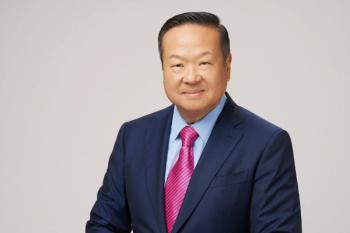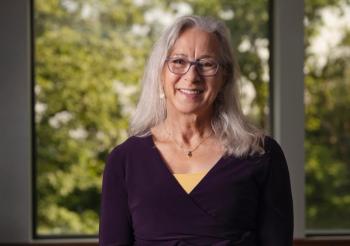
City of Hope set to open $1.5B cancer hospital in California
The new facility in Orange County will open its doors Dec. 1. Annette Walker, president of City of Hope Orange County, talks about the new hospital and the services it will provide.
Even days ahead of the opening of City of Hope’s new cancer hospital in Orange County, Annette Walker says she’s already feeling the emotions.
On Dec. 1, City of Hope will open the doors of its new cancer specialty hospital, the only cancer hospital in Orange County. The hospital is the centerpiece of a $1.5 billion investment on a 72-acre academic research campus in Irvine.
“It has been an amazing experience, and we’d had such an amazing team that has helped make this happen,” Walker tells Chief Healthcare Executive®. “It's kind of miraculous, what's been done in the time.”
The project began nearly seven years ago and faced a host of obstacles, including two straight years of record rainfall that hampered construction. But despite those challenges, the new hospital is going to open on time.
When asked if that qualifies as an early Christmas miracle, Walker says with a laugh that it might.
“I am a person of faith, and I've said on many, many occasions God must want City of Hope in Orange County, because for all the things that could have gone wrong or went wrong, many more went right, and here we are on time, under budget, and ready to welcome the people of Orange County who need our help,” she says.
(See part of our conversation in this video. The story continues below.)
‘Go big or go home’
City of Hope focuses on cancer care, and Walker said the decision to expand in Orange County was to meet community needs.
The new hospital is connected to the City of Hope Orange County Lennar Foundation Cancer Center, with an eye on providing inpatient and outpatient care on one campus. It’s also a sister hospital to Helford Clinical Research Hospital in Duarte.
Orange County, home to more than 3 million residents, is hardly lacking in healthcare providers, with more than 30 acute care hospitals in the county.
But Walker says there was a need for more cancer care. Walker, who has lived in the area for more than 40 years, says many patients were leaving the county to get the services they needed.
“Everybody thinks Orange County's got it covered, but Orange County didn't have it covered,” she says.
But given the amount of competition in the area, Walker says City of Hope didn’t move ahead lightly.
“To commit more than a billion dollars to a brand new community that already had 30 acute care providers, that's pretty bold,” Walker says. “I think it's going to be an interesting case study as time goes on, to see what are all the things that happen that made that type of step successful.”
City of Hope initially conceived more modest plans, she says. But as the system began its analysis of community needs, Walker says they found that the county was missing highly specialized cancer experts.
Orange County also needed more clinical trials, because only a handful were available, Walker says. City of Hope patients have access to more than 700 cancer-focused clinical trials each year.
After taking a closer look, Walker says it was time to convince the City of Hope board to expand its vision.
“Basically, we went back to the board and said, ‘We need you to go big or go home,’” Walker says. “Because if we didn't go big and bring those resources, meaning the highly specialized cancer experts that City of Hope has, and we didn't bring a really robust clinical trial opportunity, we shouldn't come, because we were bringing more of what the community already had.”
The board agreed that a major investment was needed, and the vision expanded.
“We are different, and we have and we provide things that aren't ordinary,” Walker says. “Now, everybody can't do what we're doing, and they shouldn't, but we're so specialized and so focused, we have the opportunity to set a different bar that will eventually help everybody.”
‘We hit a home run’
Walker has appreciated the milestones along the way, from when the shovels went into the dirt for the groundbreaking to the walls being established.
But there’s been a difference in the last couple of months, as the staff have been seeing the building and furniture and equipment have arrived. Now, the hospital isn’t an abstract concept.
“It honestly is emotional,” she says. “The number of hands and hearts that made this place … I'm grateful for every day, and when I hear our patients and their reactions, many of them, when they come in, they are brought to tears, imagining what their experience will be, or had been, and what it could be here if they had been in this building. I think we hit a home run.”
The hospital has five different patient room configurations, based on the condition of the patients. The rooms also have space for loved ones who want to stay with patients.
“Most cancer patients don't come by themselves,” Walker says. “They come with their families, and in a sense, the whole family gets cancer. So we've tried to incorporate how we accommodate the family. Every room will have a place for a family member to sleep if they desire to.”
Each floor of the hospital provides balconies for patients to step outside for fresh air.
“Our patients have a longer length of stay than most hospitals. It's about eight days. So you can imagine, if you're confined for eight days, how great it would feel to not have to go too far to get fresh air,” she says.
Rooms and spaces are filled with natural light, with some rooms offering views of the Saddleback Valley. The hospital offers a spiritual care center for families, and a walking path around the campus.
Walker relishes the building’s capabilities, and its aesthetics. And she says the beauty of the building makes a difference.
“People will walk into our hospital and they're going to say, ‘It looks so expensive.’ Well, it looks expensive, but I want to tell you, everything you put in a hospital is expensive. Whether it's beautiful or ugly, they're all expensive.
"So you have to push your choice. Give me something that's more beautiful, give me something less utility looking, something less cold, and give me something warm. Because then your patients, your staff, everybody feels better,” she says.
















































